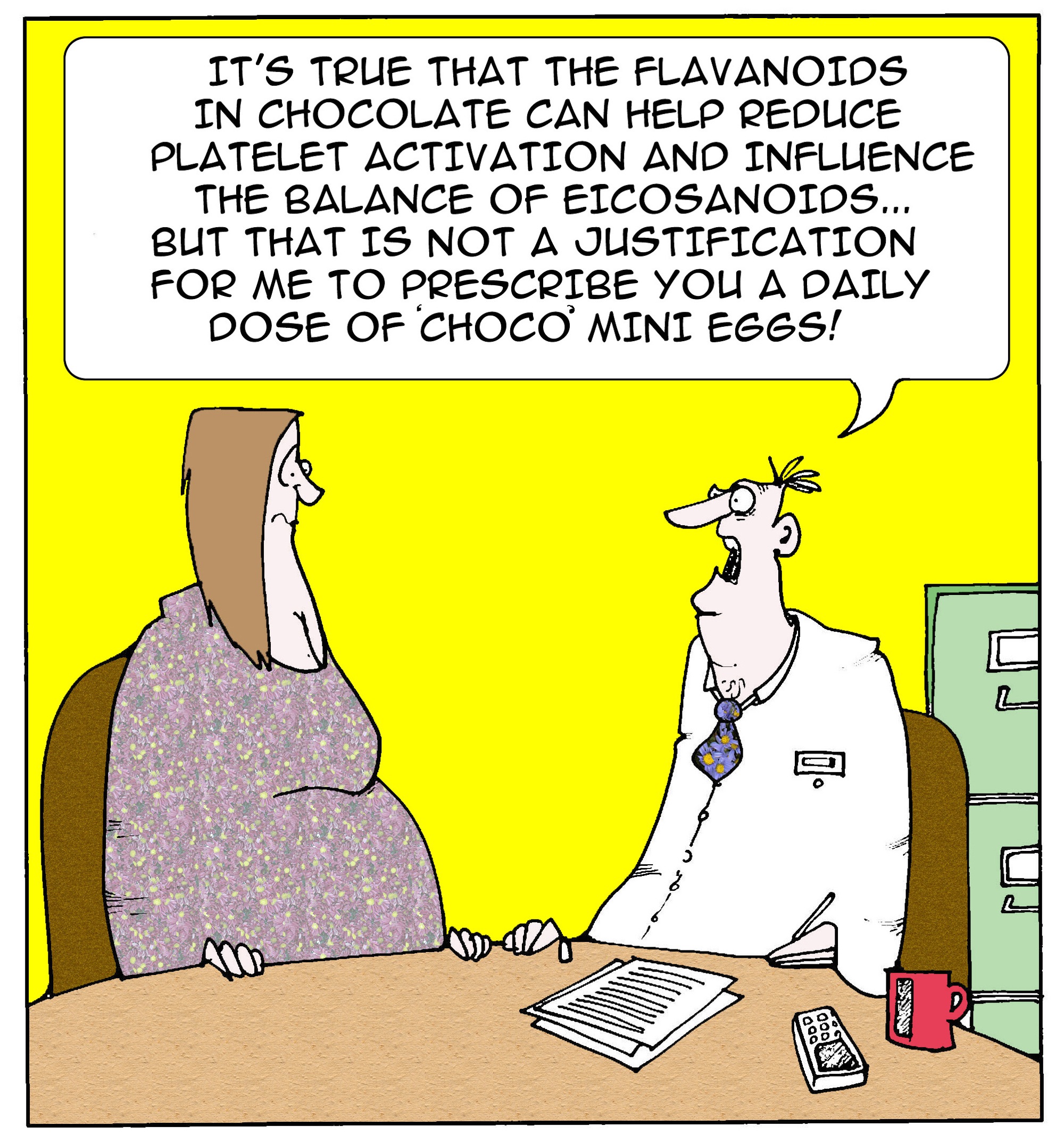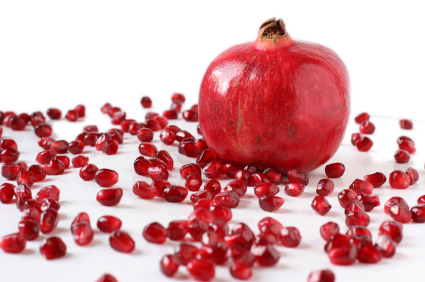Soy…revisited
 It’s been a rough ride for soy, with studies often at odds regarding its effectiveness in ameliorating or preventing hot flashes. Some reviews have shown that soy isoflavones, in particular S-equol and genistein can alleviate hot flashes while others fail to finding anything conclusive. Still, the original observation that Japanese women appear to suffer less frequently from hot flashes and have a high consumption of soy isoflavones has led researchers to keep trying to tease out the benefits of soy.
It’s been a rough ride for soy, with studies often at odds regarding its effectiveness in ameliorating or preventing hot flashes. Some reviews have shown that soy isoflavones, in particular S-equol and genistein can alleviate hot flashes while others fail to finding anything conclusive. Still, the original observation that Japanese women appear to suffer less frequently from hot flashes and have a high consumption of soy isoflavones has led researchers to keep trying to tease out the benefits of soy.
I am glad that they have. In fact, in a study published online in Menopause just a few weeks ago, researchers reported that an extensive review of 19 scientifically sound trials has shown that soy isoflavones are significantly more effective than placebo in reducing both the frequency and severity of hot flashes.
Here’s what you need to know:
- 19 trials were included for analysis and a variety soy isoflavone supplements in different doses ranging from 30 mg to 135 mg daily were studied. Some of these were natural formulations and others, chemically synthesized to match key ingredients believed to have a health effect.
- Hot flash severity and frequency were examined in women that were either premenopausal, perimenopausal or menopausal (i.e. postmenopausal) although definitions used to define this group differed between studies.
- The number of women in these studies totalled over 1,200.
The results showed that taking 30 to 80 mg soy isoflavones daily for 6 months to a year significantly reduced the frequency of hot flashes by roughly 17%. Moreover, the 10 trials analyzed for hot flash severity showed a significant reduction by as much as 30%. In both cases, these figures increased depending on how the researchers teased out and analyzed the data.
The researchers say that even though there is a common perception that results from soy trials have been mixed, there has been a “consistent and clear pattern in favor of isoflavones over placebo” when properly plotted on a graph. Moreover? The scientifically designed studies that were included in their analysis helped to insure that all populations, including women with breast cancer, were included. Additionally, they analyzed studies that were as short as 6 weeks in duration, namely to determine if women with cancer not receiving treatment would respond the same as healthy women. Additionally, there is some indication that the effectiveness of soy actually increases over time with continuous use.
What about the type of soy isoflavone? This review actually shows that genestein is more effective than daidzein for alleviating hot flashes.
The key take away is that for women who don’t want to use hormone replacement or are ineligible to do so, there is a scientifically proven effective alternative: soy. And while soy may disturb the GI tract in some women, it is actually quite safe, even among women with breast cancer.
So far, so good. The next step is to determine which factors matter most to gain benefit, e.g. dose, formulation, hot flash frequency and how long a woman needs to remain on treatment.
Read MorePomegranate seed oil and hot flashes
Let us go early to the vineyards to see, if the pomegranates are in bloom… Songs of Solomon 7:12
Pomegranates have had a place in the bible and many religions for centuries. A shrub fruit native to the Middle East, the pomegranate is valued in culinary and in complementary and folk medicine circles. As a fruit, there is none so tempting and tantalizing as the pomegranate – its seeds, both sweet and tart, are challenging to obtain and sensual in appearance.
Pomegranate seed oil is a rich source of phytoestrogens, plant-like compounds with estrogen properties that may influence estrogen receptors and modulators in the body. Its main components include linolenic acid (an unsaturated fatty acid that is in the omega-3 family), punicic acid (a conjugated polyunsaturated acid) and ellagic acid (an antioxidant found in many fruits and vegetables). Studies in mice suggest that pomegranate oil may be helpful in lowering blood pressure, counteracting insulin resistance and preventing prostate, colon, lung and breast cancer. Because of its estrogenic properties, it may also be useful for menopausal symptoms. Or not.
A study that appears in the online version of Menopause explores the value of pomegranate seed oil for hot flashes in 81 women. Over a 12 week period, these women received either capsules, twice daily, that contained 30 mg pomegranate seed oil or placebo capsules containing sunflower oil. All women participating in the study were in menopause for at least a year and reported having at least five hot flashes a day. None had taken hormone therapy within 3 months of starting the study, which of course, could affect results.
Women taking pomegranate oil experienced significant benefits, reducing the mean number of hot flashes by 4.3 a day. However, women taking placebo also reported significant reductions in hot flashes by as much as 2.5 per day. After 12 weeks, the pomegranate oil group had a reduction in hot flash frequency by as much as 38.7% compared to the placebo group, who had reductions by as much as 15.6%. Based on these numbers, it would appear that pomegranate seed oil was indeed, significantly more effective than placebo, right? However, the researchers say that the total reduction in the frequency of hot flashes was no different between women taking pomegranate oil and those taking placebo. At the same time? When they tracked the women past this time period (up to 24 weeks), they found that the differences remained, suggesting that the effects of pomegranate oil may be sustainable and even take a longer treatment time to reach its full effect. This warrants looking into its potential with larger studies of longer duration.
One thing to mention is that it did appear that pomegranate seed oil also benefited other symptoms, in particular sleeping disorders, which is in line with other studies looking at isoflavones. And, no side effects or serious adverse events were reported.
So does it or doesn’t it? Undoubtedly, the placebo effect plays a role in all clinical studies, whether or not they are focused on pharmaceutical treatments or complementary therapies. Other studies of phytoestrogens have shown mixed results and a small number have met the criteria for scientific design. Still, there is a question about the role that time plays; many herbal medicines are well known to take some time before reaching full potency in the body in order to exert any sort of intended effect.
I say that the verdict on pomegranate seed oil isn’t in yet. It’s not the panacea we’d like to see but it also isn’t a flat out failure.
Meanwhile, I love that I once heard chef Jose Andres suggest that the best way to access its seeds is to pat it like a baby’s bottom.
Stay tuned for more news on this jewel of the fruit world.
Read More
Loco for cocoa – chocolate and your heart
 Last June and August, I wrote about the link between eating chocolate and improving heart health. Briefly, researchers have long been interested in flavonoids and in particular (at least in so far as menopause goes) in isoflavones. (See soy posts for more on isoflavones). The specific compound or molecule of interest in cocoa (the non-fat component cocoa bean extract or liquor) are flavanols, which are also found in lower concentration in apricots, peaches, apples, green and black tea, red wine and cider). Note that the quantity of flavanols in chocolate depends on manufacturing, including fermentation and roasting, and how much treatment is given to reducing bitterness and improving consistency. What this means is that dark chocolate has the highest concentration of flavanols and milk, the lowest.
Last June and August, I wrote about the link between eating chocolate and improving heart health. Briefly, researchers have long been interested in flavonoids and in particular (at least in so far as menopause goes) in isoflavones. (See soy posts for more on isoflavones). The specific compound or molecule of interest in cocoa (the non-fat component cocoa bean extract or liquor) are flavanols, which are also found in lower concentration in apricots, peaches, apples, green and black tea, red wine and cider). Note that the quantity of flavanols in chocolate depends on manufacturing, including fermentation and roasting, and how much treatment is given to reducing bitterness and improving consistency. What this means is that dark chocolate has the highest concentration of flavanols and milk, the lowest.
What have researchers learned so far?
- Flavanols found in cocoa and cocoa powder may be powerful antioxidants and as such, help to mitigate certain factors that contribute to atherosclerosis, such as the formation of plaques in the arteries that lead to stroke and other coronary events. Thus, as antioxidants, they may actually neutralize toxic oxygen species circulating in the bloodstream.
- Experimental data suggest that ingestion of flavanols may help to regulate proteins and other compounds that encourage an inflammatory response to leads to heart disease.
- Flavanols may also help to stabilize the lining and muscular tone of the arteries and prevent them from narrowing.
- Additionally, flavanols may moderately protect against high blood pressures, although studies have been mixed.
- Finally, flavanols may help to maintain blood sugar levels and improve the ratio of good to bad fats in the blood.
However, while numerous studies suggest that chocolate may benefit the heart, less clear is whether or not a causal relationship exists. Still, the idea is attractive enough that researchers continue to delve into the potential benefits of functional foods containing flavonoids and in flavonols found in dark chocolate. This time, writing in the journal Appetite, they report on a newly published study that examined the effect of eating flavonoid-rich dark chocolate on a process called oxidative stress, in which the ratio of circulating oxygen free radicals to circulating antioxidants is imbalanced (free radicals are those nasty, unstable molecules or atoms that can wreak havoc and lead to disease, including heart disease, diabetes and high cholesterol).
Over a period of three weeks, 25 healthy men and women were asked to eat 50 g of dark chocolate daily. The women in this particular study were premenopausal, primarily because use of hormone replacement has been shown to modify oxidative stress that has been attributed specifically to LDL (low density lipoprotein, also known as the bad cholesterol). They also omitted any other cocoa products from their diet and tea, red wine and other drinks that were rich in antioxidants.
Not only did eating dark chocolate daily have no impact on body mass index or the subjects’ weight, but it significantly increased the percentage of HDL (high density lipoprotein or good cholesterol) and led to a significant declines in blood fats levels as well. Dark chocolate consumption also appeared to lower markers of oxidative stress and damage to good fats in cells by almost 27% in women in the study, indicating a favorable effect on LDL, a change that was not similarly observed in men. This suggests that eating dark chocolate could possibly benefit women more than men, at least in terms of the heart. And, while menopausal women were not studied, the researchers say that the protective role of dark chocolate could possibly be especially favorable during menopause, when waning levels of estrogen make women particularly sensitive to oxidative damage and heart disease.
As with similar studies, we still don’t have a definitive cause and effect. However, a little dark chocolate has the potential to go a very long way.
Read More
Crow’s feet? What crow’s feet?!
Crow’s feet. Most of us start to develop them in our mid to-late 30s and by the time we reach the age of 50, they’re pretty pronounced. This is no surprise because aging skin is associated with a decline in elasticity and moisture. And, let’s face it, if you grew up with light-coloured eyes like I did, you have an even greater tendency to squint in bright light, another factor contributing to those tell tale lines around the eyes. In women in particular, crow’s feet are a rule and not an exception, as aging is accompanied by a loss of estrogen, which has been linked with as great as a 30% loss of collagen in the dermis (the thick, sturdy layer of connective tissue that comprises about 90% of the skin’s thickness) within the first five years of menopause. Collagen, which is the most abundant protein in the body, is responsible for skin’s durability and strength. As it declines, skin starts to sag and wrinkles form. Oh, happy day!
Unfortunately, researchers continue to debunk claims that replacing estrogen can improve the skin’s appearance. That’s the bad news. Likewise, don’t look for expensive moisturizers or facials to do the trick either. However, there are data that suggest that intake of soy isoflavones may improve aging skin. And once again, S-equol is the winner in the isoflavone antiaging department.
A bit of background…
If you are new to Flashfree, you may be unfamiliar with S-equol. Briefly, S-equol is a metabolite of a major soy isoflavone called daidzein. It has a particular affinity for estrogen receptors and possesses some estrogen-type activity of its own. S-equol is produced in the gastrointestinal tract however the ability to actually manufacture it depends on the presence of certain microflora there. Consequently, only 30% to 60% of individuals are actually able to produce S-equol on their own (although this figure is believed to be higher among Asians and vegetarians). (You can read a full range of posts on S-equol here)
Because skin cells responsible for producing collagen express estrogen, researchers believe that S-equol and its affinity for estrogen receptors may impact skin very similar to the way that estrogen does. In fact, when 101 Japanese menopausal women randomly took 10 mg or 30 mg standardized S-equol (SE5-OH) or a sugar pill daily for 12 weeks, that is exactly what they found. Even more interesting was the fact that S-equol was studied in women who do not produce it naturally in their bodies (even though s-equol producers are believed to gain greater benefit from soy products).
Over weeks, researchers measured numerous skin parameters, including crow’s feet, wrinkles, the degree that the skin was hydrated, skin elasticity and loss of water through the skin. To equalize the playing field, measurements were taken in a room that was the same temperature and humidity level each time, and women were instructed to remove any cosmetics using the same cleansing foam 20 minutes before each exam. They were also advised not to alter anything about their diet or sun exposure during the study period.
The findings?
Both 10 mg and 30 mg daily standardized S-equol significantly improved crow’s feet wrinkles/reduced the total wrinkle area compared to placebo tablet. And, 30 mg daily dose also significantly decreased wrinkle depth as well. What’s more, ingesting S-equol supplements did not appear to affect uterine or breast tissues or hormone status, indicating that unlike hormone replacement, using S-equol to combat declining estrogen levels is safe.
So, how does it work?
Although researchers say that the need a longer observation period to confirm S-equol action on skin, they believe that like hormone therapy, it gradually boosts the quantity and quality of skin collagen, and may even help preserve skin hydration from within. Additionally, because skin aging does not solely rely on estrogen levels, S-equol may also act as an antioxidant and help transport nutrients to the upper and middle skin layers. And more importantly, other studies have shown that when Japanese,White, Hispanic and African-American women were compared, the Asian women had the least amount of wrinkling and sagging. If you translate the findings and consider the degree of differences in wrinkling among ethnic groups, it is very possible that S-equol may benefit women living in the U.S. even more than their Japanese peers.
Is it possible that S-equol is truly a Fountain of Youth is in pill form? Yikes! This is pretty darn exciting! Me? I’m off to the store in search of standardized S-equol. Crow’s feet? What crow’s feet?!
Read MoreWednesday Bubble: Soy takes another hit
We’re live!
Welcome to the new home of Flashfree! Our URL has changed but the same content that you’ve grown to know and ‘love’ is the same.
Let’s kick off http://flashfree.me with the latest and ‘greatest’ report on soy: it does not help menopausal symptoms or prevent bone loss.
Isn’t this contrary to what’s been reported previously, at least with regards to women with the ability to produce S-equol?
In this latest nail to the soy coffin, research appearing in the Archives of Internal Medicine suggests that part of the issue in proving or disproving the utility of soy for menopause is the lack of trials of long duration, consistent use of low doses of soy isoflavones, small number of participants and too much breadth and depth of age and menopausal status. However, the SPARE trial (Soy Phytoestrogens as Replacement Estrogen), aimed to change this paradigm by examining the effect of daily 200 mg soy isoflavones in tablet form in 248 women between the age of 45 and 60. All participants had been in menopause for one to five years or for six to 12 months. These women were studied for two years, were instructed to take the active pill or placebo tablet before breakfast, and stop taking any hormones for at least six months before the study started. Calcium was supplemented in women who were taking less than 500 to 1000 mg daily. Importantly, women taking the isoflavone tablets were actually receiving a dose equal to approximately twice that normally obtained through food in Asian diets.
At the study’s end, the researchers found that women taking soy or placebo were on equal footing and that soy did not appear to prevent bone loss or reduce bone turnover. Moreover, soy did not appear to have any significant effect on hot flashes, night sweats, libido or vaginal dryness. They also say that even though women who are able to produce S-equol in their guts were likely to benefit from soy compared to women who are not, they did not see any specific benefit when these women were studied separately. Although not considered a dangerous side effect, constipation was experienced by more than a third of women taking soy.
So, what are we to think? Some studies say soy is effective, particularly among S-equol producers while others, like this well designed trial, show that it is now. However, there has been some data suggesting that the ratio of specific isoflavones may play an important role, and there is no information in the published study about this ratio other than to say that the soy supplement used is similar to those obtained in health food stores.
When it comes to soy, the verdict isn’t quite out yet, although the studies that have been conducted to date can’t seem to tease out what’s what. As always, use caution and lower your expectations. There are other non-hormonal approaches that may provide greater benefit when it comes to bone loss and menopausal hot flashes and other symptoms.
Want to read more on soy isoflavones? Check out the Flashfree archives.
Read More








